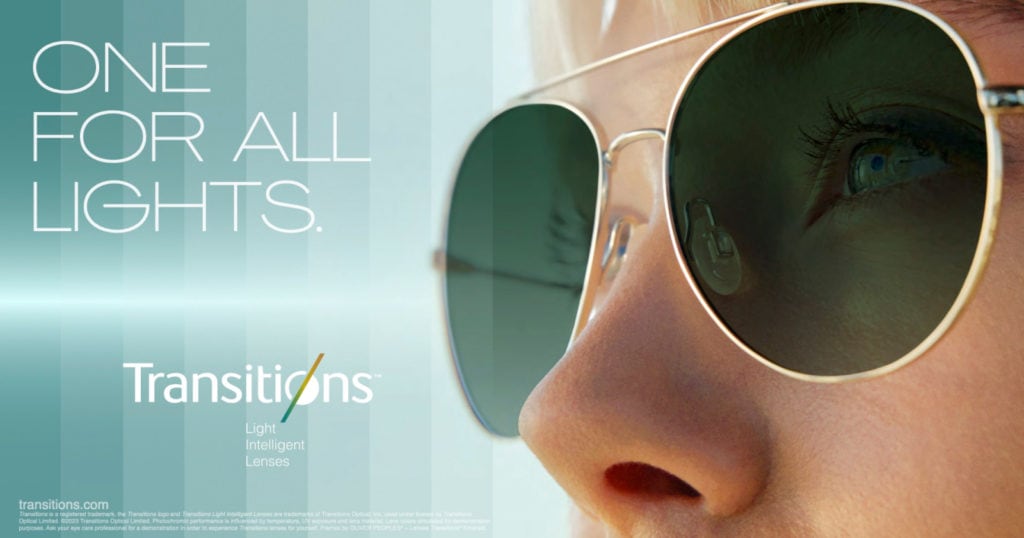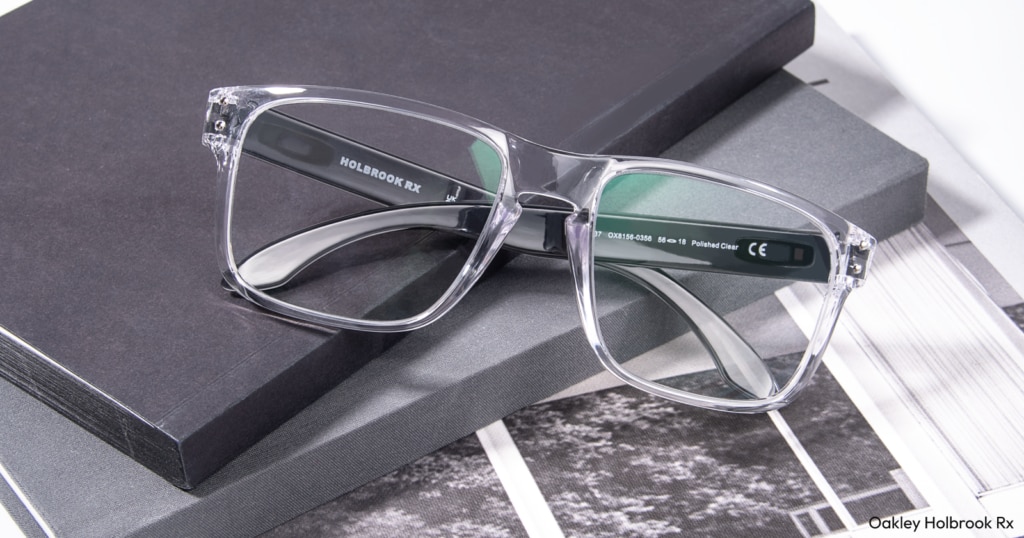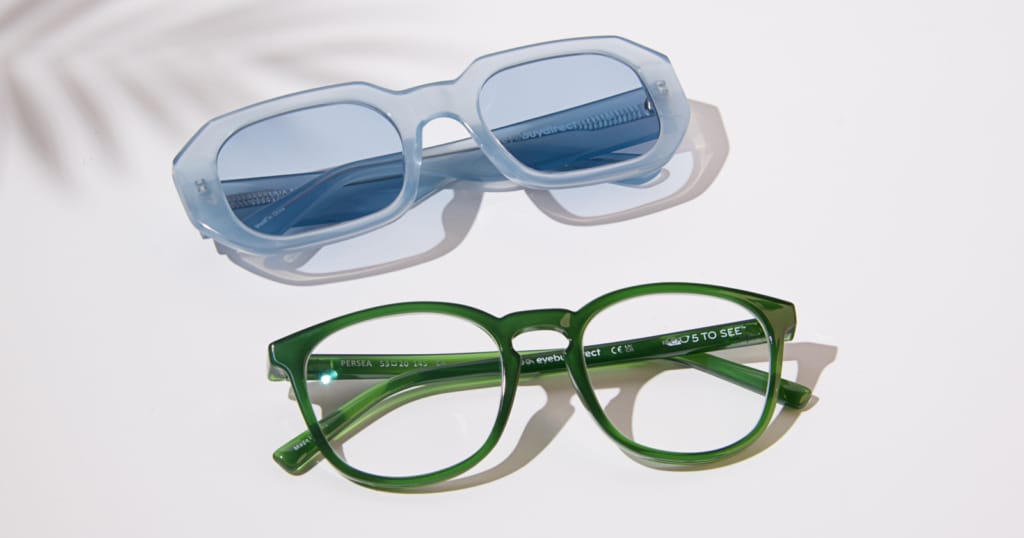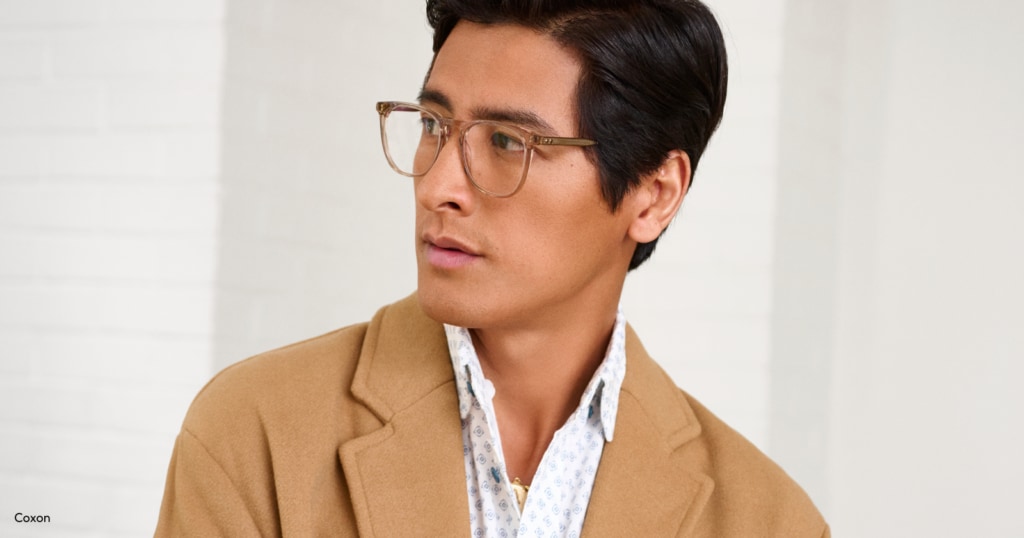Wearing sunglasses when you already wear prescription glasses can be tricky. Sometimes it feels easier to forfeit the sunglasses and squint while you’re outside, risking ultraviolet (UV) damage to your eyes (not recommended). Or, when you’re on the go and do have your sunglasses on, there’s more of a chance you’ll forget your regular glasses and have to wear your shades indoors (also damaging to your eyes).
Enter: Photochromic lenses. Light-adjusting lenses such as Transitions® lenses, adapt seamlessly from indoor to outdoor, shielding your eyes from UV exposure while maintaining your eyewear prescription and providing clear vision.
Below, we answer some common questions about photochromic lenses and dive into the different types of lens tints available.
What are the benefits of photochromic lenses?
Imagine being able to walk outside in your prescription glasses and having them darken automatically to shield your eyes from the sun. Photochromic lenses are an easy and effective way to protect your vision when going from indoors to outdoors.
Photochromic lenses also save you the money of having to buy a pair of prescription sunglasses in addition to your regular eyeglasses. Plus, having only one pair of glasses to keep up with adds a layer of convenience and lessens the likelihood of you misplacing your glasses.
Can you get photochromic lenses with any prescription?
Photochromic lenses are available for most prescriptions. Book an eye exam to find out if your prescription is eligible for a photochromic upgrade.
Can photochromic tints be added to existing lenses?
Unfortunately, no. The light-adaptive technology of photochromic lenses is built into each new lens upon creation; it’s not a special treatment or coating that can be added later. Fortunately, photochromic lenses come in a wide variety of frame styles and lens designs, from aviator to cat-eye and single vision to progressive. Use it as an opportunity to treat yourself to some new specs.
Are photochromic lenses as good as sunglasses?
When outdoors, yes. Photochromic lenses work by using molecules in the glass to sense and adjust depending on the level of UV radiation detected.
Are photochromic lenses suitable for driving?
Because the windshield of your car blocks UV rays, photochromic lenses may not get as dark when you’re behind the wheel, unless they’re specifically made with that feature, like Transitions® XTRActive® lenses.
These premium lenses are activated behind the windshield to protect your eyes from bright light, but more basic photochromic lenses won’t do the same. To guarantee that your sunny drives are glare-free, some people like to have a pair of prescription sunglasses handy.
What is a photochromic lens like versus a Transitions® lens?
Well, they’re essentially the same thing, with Transitions® being a specific brand of photochromic lens that’s produced by lens manufacturer, Essilor. But, while they both achieve the same effect, Transitions® offer a more premium lens experience by changing between tinted and clear more quickly. And don’t worry if you have progressive lenses! From single vision to multifocal, there are light adaptive lens options for almost any prescription.
Can you wear photochromic lenses at night?
Absolutely! At night, in the absence of the sun’s UV rays, photochromic lenses are clear, just like a standard pair of eyeglasses.
How long do photochromic lenses last?
Photochromic lenses should last as long as your prescription is valid — anywhere from 24 to 30 months.
Photochromic tint options
There are many options available for photochromic lens tint colors, but the three most common are gray, green, and brown. Each offers its own benefits, and all block 100% of UV rays. Here’s a little more about each specific one:
Gray — Appropriate for sunny and cloudy days, gray lenses are ideal for general, everyday use, including driving. They offer the ability to see colors in their true form without any effect from the tint.
Green — Best for reducing glare and brightening shadows, green lenses provide higher contrast than gray lenses and more exact color accuracy than brown lenses. They’re a good option for any outdoor activity in any weather condition.
Brown — Not recommended in low-light conditions such as early evening or a cloudy day, brown lenses improve depth perception for activities like driving, golfing, and fishing.
Lively lens tints
If you prefer a little more pizazz in your eyewear, Transitions® lenses now come in an exciting new line of style colors, including emerald, sapphire, amethyst, and amber. While emerald and amber lenses provide the same benefits as green and brown (just in a more vibrant fashion), sapphire (blue) and amethyst (purple) have their own merit.
Blue and purple lenses reduce glare, improve color perception, and enhance contrast. A blue tint can also be calming for your eyes. These tints are ideal for a sunny round of golf, a day on the slopes, or navigating through misty or foggy conditions.
For those who are looking for sunglasses that really reflect their personal style, Transitions® XTRActive® lenses have a mirrored finish available in a variety of colors, including pink, gold, and red. The mirrored finish adds a touch of flair outdoors that dissolves when you step inside.
No matter how much time you spend in the sun, photochromic lenses are a convenient way to protect your sight. Consult with your eye doctor to get an updated eyeglasses prescription and start customizing your next pair of glasses with photochromic lenses!




